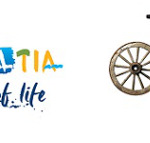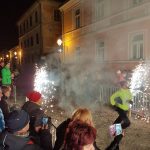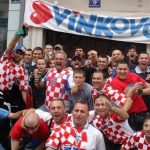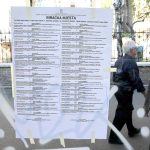Continuing her look at the officially recognised cultural heritage of Croatia on March 13, 2017, Filipa Marusic takes a deeper look at the fascinating story of the Bednja language or dialect, which is to be found around magnificient Trakoscan Castle in rural Varazdin County.
When you go to Hrvatsko Zagorje, the first thing you’re going to do is visit lovely Varaždin and stunning Trakošćan castle. While visiting these two pearls of Varaždin county, a lot of people don’t know the history and cultural importance of the area Trakošćan is located in. The castle on the hill is located in Bednja municipality where local people speak Bednja language, which is a form of dialect used in native speech. Bednja language is common in Bednja and areas around Lepoglava, Kamenica, Jesenje. This area is surrounded by hills – Ivančica, Strahinjčica, Maceljska gora and Ravna gora – and these geographic conditions contributed to preserving almost unchanged language for centuries.
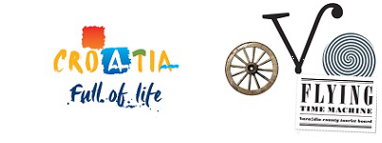
The ancient Slavic accent can be heard in many words in the language, and in many cases the accent is similar to other Slavic languages. The language has an archaic form and various linguistic features, such as phonetics, lexical, morphology, semantics; but it remained an active language of the area due to specific regional features of the language itself, and the structure of the speech which resisted the influences of other dialects. Bednja language is special because almost every word that comes from a different dialect or language is adapted to the Bednja language. In the 1950s, there were approximately 8500 people while nowadays we only have 4765 people speaking this language. All the villages where Bednja language was or still is spoken are spread around these hills and have just a few small wooden houses (locally called hiža). The names of villages which still use the language are: Bëdnjo (Bednja), Plîeš (Pleš), Šõšo (Šaša), Vĕrbno (Vrbno), Trökešun (Trakošćan), Benkyevci (Benkovec), Rinkevci (Rinkovec), Prabykýevja (Prebukovje). Usually these villages had neighbor villages whose names came from the names of the families living there. All the names of villages are quite old and can be found in Latin charter from 1584. when King Rudolf handed the ownership of Trakošćan to Dukes Juraj and Gašpar Drašković.
This language/dialect, part of the intangible cultural heritage of Croatia, is definitely one of the most interesting, melodic and complicated dialects of Kajkavian. This has to do with richness of vowels, diphthongs, interesting voice changes, accents and other specifics. All these characteristics have been in use for centuries thanks to already mentioned geographic conditions and isolation. The people of Bednja were mostly farmers and servants for landowners who were owners of Trakošćan castle (they had different rulers – dukes Celjski, Vitovac, Gyulay and finally the Dukes Drašković) and Lepoglava Pavlins – this means they were mostly illiterate and not under the influence of standard Croatian language. During history only newcomers to this area were craftsmen who would be soon assimilated with local people. There weren’t any bigger migrations or immigrations as there was no war in the region, and the local inhabitants lived on hills where life was hard and all the good land was in the hands of noblemen. Due to this isolation from others, they didn’t move to other areas of Croatia until more recent times.
This language was often considered difficult or even ugly, especially for someone who speaks standard Croatian. This made a lot of locals use standard Croatian or Kajakvian in interaction with people who are not from Bednja. One of the advantages of having such a demanding dialect is that it is much easier to learn the proper pronunciation and accent of other Croatian dialects but also pronunciation of foreign languages. This has to do with the fact Bednja people have better hearing than other language groups.
In scientific circles the Bednja language is unfairly neglected. This is why it is important to mention professor and dialectologist Joseph Jedvaj, born in Šaša, who as part of the Croatian Dialect book, published so far the most precise and most extensive studies of Bednja language and was a great source of information for writing this article.
Another author responsible for preserving the Bednja language is definitely Slavko Šprem, with his poetry collection called ‘Nujljiepši kemoček svieto – Bednjo’. In order to preserve this unique language there is a sound recording collection tape called “Nošo bedljuinsko rieč”, made by professor Barica Pahić Grobenski, who Bednja Municipality honored with Lifetime Achievement award. The professor, in an interview with Tportal from 2015., explained several interesting facts about the Bednja language. She said that the Bednja language is the oldest Croatian dialect with which Croatians came to this area. She noticed that when learning Old Slavic during her studies was quite easy as she found similarities with her childhood dialect from Bednja. Also she could easily communicate with people from Wadovice, Poland (this area in Poland is considered to be White Croatia – homeland for Croatians before they move to Croatia). She also said all Kajkavian dialects came from the Bednja language, and ancient Croats didn’t come to Croatia illiterate but they used a language similar to Bednja language. As part of one of her researches, she made a comparison of Bednja speech, Kajkavian from Varaždin and Croatian standard language. The results showed Bednja language is in many elements more relatable to Croatian standard grammar than the Kajakvian from Varaždin. She concluded the Bednja language has an important role to play in revealing Croatian linguistic roots.
In order to support the Bednja language, the municipality of Bednja made decision to finance the development of Bednja dictionary in order to preserve the dialect for future generations. The project will be part of the Institute of Croatian language, and the starting point for interpretation of dialect will be a collection of words of Bednja dialect by Marija Antolković which has approximately 20 000 words. There were some good examples of schools in the area which had Bednja language as an elective course.
The Bednja language today in comparison to language that was in use 50 or 100 years ago differs the most in words in use. The change of lexicon was triggered by lifestyle changes and transition from agriculture to manufacture, crafts, industry, services and intellectual activities. This also caused the disappearance of some words and phrases related to agriculture, household and appearance of the words related to technology and science. Language is changing according to trends – this is common among younger people – they usually use the Bednja accent while pronouncing words instead of making unique word in Bednja language. This doesn’t present the value of Bednja language where its greatest asset is lexical creativity. This language should stay integral part of identity of local people and a great example of diversity of Croatian language.
SOURCE: Jedvaj J.(1956.): Bednjanski govor, Bednja Municipality, Tportal, Institute for Croatian Language

